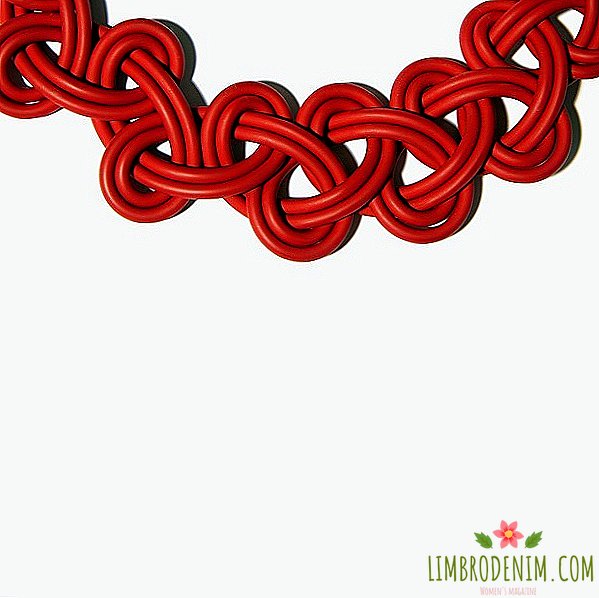Abibas: How fakes took over the world
Economic forecast for Next year promises to be not the most optimistic - we are almost resigned to this and are trying to figure out how the fashion market will change in various segments. We have already figured out what forecasts are made by consulting specialists and industry people, but we ignored the sensitive but relevant topic of fakes. Meanwhile, experts say that it is during periods of economic recession that there is an increase in demand for fakes of all stripes. We understand where the history of counterfeit in fashion comes from and how it is related to it now.

Intellectual property protection is a problem that tormented people's minds more than one thousand years ago. In ancient Egypt, Rome, and for the next several millennia, stigmas served this purpose. In the Middle Ages, guild masters began to appear, each of which personally signed the product he had created. With the advent of the industrial revolution, when production volumes began to gain unprecedented scale, companies began to develop trademarks - the authenticity of products is now determined by the patented name. Around the same time, the notorious Charles Frederick Worth began his career - a man who is called the father of the Parisian haute couture and who became the first fashion designer to decide to sign his work, in fact, having begun branding in the fashion industry. Since the 1950s, with the spread of licensing practice (Christian Dior was a pioneer and leader in this business), brands and logos became a universal phenomenon and became almost sacred: if the name on the label used to mean only authorship of the creator of the thing, now it has become a marker social status and financial soundness.
Naturally, not everyone who dreamed of dressing a Parisian couturier could afford this luxury. Cheap imitations were not only made a little closer to the material dream, but also moved one step higher in the public hierarchy - even if such an upgrade was in essence a big soap bubble. It is the garment industry that has become a tasty morsel for manufacturers of illegal copies, because clothing is the most demonstrative way to make a statement to the public "see, I can afford it." At the beginning of the 18th century, the world-famous Lyon silk began to be copied so often that the organization of local weavers demanded an official law for the protection of intellectual property — the corresponding act was issued in 1787. By the way, in the same year, British textile companies made a response request to license the production of local fabrics: linen, cotton, muslin and calico. In the United States in the 19th century, the copying of patterns on textiles from European designs was especially common - a practice that would then go into the sphere of ready-made clothing and serve as a trigger for the birth of American ready-to-wear.
French designers regularly suffered from illegal copying of American entrepreneurs, and it often came to court — Paul Poiret faced this in the 1910s and Madeleine Vyonne in the 1920s (her way of dealing with piracy was to mark her work with her own fingerprint). Later, the problem will affect Christian Dior, who will personally ensure that no living soul makes notes or sketches during the screenings of his collections, and Cristobal Balenciaga - in order to at least slightly reduce the risk of illegal copies, he decides to conduct his shows after how all the other Parisian designers will show their collections.

By the middle of the 20th century, a dilemma arose: fashion designers could not stop cooperating with American buyers because their purchases made up a large part of the profits, but at the same time financial losses from illegal fakes were fatal - in 1958 for this reason the French fashion industry lost 200 million dollars of export income. Not to mention that the low quality of the goods-copies significantly hit on the image of a house. In order to prevent information leaks, designers went to a variety of techniques: from direct intimidation of staff to creating super comfortable working conditions, so that seamstresses and cutters would have no reason to sell precious information (for example, in the Christian Dior house they offered free three meals a day, medical care, and for greater motivation, posters in the spirit of "Copy - it means to steal" and "Piracy is not paid" were hung all over the atelier).
Paris high fashion syndicate tried to somehow tame the flow of production of fakes, releasing a code of honest behavior among journalists, buyers and retail representatives, and also tried to regulate where, when and how the new collections should be shown. For example, if a magazine published a collection immediately after the show, all models had to shade so that it was impossible to see the details. However, not only American businessmen were engaged in illegal work - in 1956, French police detained pirates who were going to take sketches of the collections of the main Parisian designers to Cairo.
To reconcile the couturier with the enterprising businessmen partly succeeded in introducing the sale of official licenses. In the middle of the 20th century, this became a common practice among fashion houses, under whose name various products were made: from tights to feather pens. But, more importantly, retailers could use designer models and patterns, creating cheaper and often simplified copies. Of course, this did not exclude the possibility of piracy, but it greatly simplified the control over goods released under the brand name.

In the 60s, with the advent of the Bazaar Mary Cuant and Biba Barbara Kulansky boutiques, fashion became more accessible, and the expensive label ceased to be a stigma. In the 70s and 80s, forgeries were still the scourge of the fashion industry. For example, in the late 70s with cheap designer jeans, the market was flooded with cheap copies, but the designers did not attach much importance to this. In the last decade of the 20th century, the situation changed dramatically, which was facilitated by two factors: the boom of logomania and the development of China as a center of light industry.
In order to increase the audience, luxury brands began to offer buyers to touch the world of luxury, putting up for sale cheaper products under their own name such as perfumes or accessories. Only this was not enough for buyers. In addition, with the function of demonstrating conditional affluence, a bag or a branded belt could cope more effectively than perfume. If in 1982 the US International Trade Commission estimated the losses from the production of pirated copies in the world at 5.5 billion dollars, by 1988 this figure was 60 billion, and in 1996 it was 200 billion. Pseudo-Prada, Louis Vuitton, Gucci and Versace - the most desirable brands of the late 90s - divorced many times more than the originals.
In 2002, the International Anti-Piracy Coalition announced that 18% of all counterfeit goods passing through US customs were luxury goods: from watches to handbags and accessories. In the mid-2000s, Burberry, a respected British brand with a long history, was on the verge of bankruptcy due to the fact that fakes with a proprietary cell bought up marginal personalities from disadvantaged English districts, which greatly hurt the company's image. In 2004, 18% of all counterfeit products in the world were made up of the one that featured the Louis Vuitton logo. By the way, this particular brand is one of the most copied so far, on a par with, God forgive me, UGG and Rolex. Thus, 40 million fake watches are produced annually, which means for the brand a loss of about 600 million dollars.

Online commerce, which began to develop just in the prime of zero, added fuel to the fire, giving illegal entrepreneurs an additional marketing space, not limited either geographically or physically. As mushrooms began to appear, sites like www.aaareplcas.com, which did not hesitate to buy a Hermès or Prada bag for 10% of the original value. Not to mention the retail giants like amazon.com and ebay.com. So, in 2004, Tiffany sued eBay, claiming that 80% of the goods sold through the site with their label were fake. The same story happened two years later with the fashion conglomerate LVMH - 90% of the Louis Vuitton, Dior and other products in the LVMH portfolio on eBay turned out to be unreal. By the way, the company then won the court - and eBay had to pay compensation of 63 million dollars.
The problem of counterfeit, of course, does not apply only to luxury brands: no black market can do without Abibas, Nice and Lacoste polo shoes with a crocodile, as if stuffed with hormones. In 2011, more than 12 million copies of all products sold under the adidas label turned out to be fakes. Original Nike sneakers cost about $ 150, their exact copy in China is produced at a cost of $ 13, and then sold for $ 60. By the way, China still remains the leader in the production of pirated products: approximately 70% of the total fake comes from there. Other countries: Malaysia, Vietnam, the Philippines and Thailand, where, by the way, they even built a counterfeit museum with 4,000 exhibits.
Our country has a special relationship with the topic. So, the nineties greeted us with a titanic stream of fakes of all stripes. The task was also simplified by the close proximity of the border with China, so for brands to regulate the entire fake merging into Russia turned out to be impossible at all. In the mid-90s, the financial losses of companies due to the sale of counterfeit products on the territory of Russia were estimated at $ 1.3 billion. Reebok even organized a special department responsible for monitoring counterfeiting in the Russian market.

One of the most fashionable products in the 90s was, of course, Levi's jeans. Since the beginning of the century, the fake fashion has not disappeared anywhere: we had Cherkizon and the Dubrovka shopping center still remained, and even the main central department store of the city was accused of selling counterfeit at the cost of a car. According to an estimate for 2010, 70% of luxury brands sold in Moscow turned out to be fake and made in China, and it was possible to find them not only in the markets, but also in quite respected boutiques with brands up to 5000 percent. In general, the well-known model "business in Russian."
Today, from 5 to 7 percent of all goods produced in the world is a pirate market with an average annual turnover of 500-600 billion dollars, which is about two times higher than the income from illegal drug trafficking. Selling counterfeit goods online is growing by about 20% every year. According to forecasts, in a few years it will exceed the same sales offline - the positions here reinforce the nuances of e-commerce: the buyer can not see the goods alive.
According to a study by The HuffingtonPost, 22% of consumers deliberately buy fakes. Luxury brands as they can try to minimize the fake momentum. The largest of them practice a “zero tolerance policy” in relation to counterfeit manufacturers and have a large staff of lawyers who regularly monitor cases of illegal use of names. In 2012, 75 luxury brands belonging to the Paris-based Comité Colbert Association, founded in 1954 by Jean-Jacques Guerlain, launched an anti-piracy campaign to remind you that both production and consumption of counterfeit are tantamount to criminal offenses.
For the local industry, this problem is particularly acute: the French economy loses 6 billion euros and from 30,000 to 40,000 jobs annually from forging luxury goods. The largest British brand Burberry fake turnover costs 3.5 billion pounds every year, but two years ago he managed to sue 63 million pounds from illegal online retailers. By the way, in the same year Hermès addressed a similar case - the brand demanded to close 34 sites selling fake Birkin and Kelly bags and a compensation of 100 million euros.

Since 2011, the American Council of Fashion Designers CFDA has teamed up with eBay and launched the "You Can't Fake Fashion" campaign with the aim of telling customers what a fraud is fraught with. The initiative is clear - the largest online retailer sells one designer bag every 4 minutes, and you can guess how many of them turn out to be fake. This September, LVMH and Google have agreed to make joint efforts to monitor the fake online - and this is after ten years of regular litigation against the background of the acquiescence of the search engine when selling counterfeit goods. At about the same time, Gucci and the French conglomerate Kering blamed Alibaba, the largest Chinese online store, for not fighting with numerous fakes on their platform - the case is already awaiting trial.
You can build a dozen theories about why in the civilized world with the most powerful fashion industry, which can offer cool things from virtually any price category, the turnover of fake goods is not going to decline. The whole mechanism works on the principle of human psychology, according to which we enhance our status in the eyes of others at the expense of certain visual markers. And if the logo was at the forefront at the peak of the brand, then with the advent of the mass market, the idea of copying a well-known name was replaced by copying the intellectual property product itself - in other words, design.
From the point of view of the buyer, to make a choice in favor of, for example, a Zara scarf with a print that is almost identical to the original Burberry Prorsum does not mean to buy a fake. It is said that partly such a turn triggered the global financial crisis of 2008, after which ostentatious luxury with flaming labels became a move. However, even mass-market brands are no longer immune to piracy: on Aliexpress you can regularly find things "exactly like in Topshop", and H & M has repeatedly encountered the sale of counterfeit online.
Fakes today are part of modern culture. The art team Shanzhai Biennial launches a project dedicated to counterfeits for various brands, from Chanel to Converse, which will be shown in the Colette concept store in Paris. Los Angeles-based designer Brian Lichtenberg distorts the names of famous brands and sculpts on t-shirts and sweatshirts inscriptions like "Homies" (formerly Hermès) and "Feline" (aka Céline) that fly like hot cakes, and Brian in turn copies the Russian brand not the CapsLock brand of Rita Nesterets, which now has taken on the Supreme and Nike logos.

In general, the fact that right brands like Supreme began to be drawn into the production of counterfeit goods, suggests that at a certain point the consumer culture shifted from the elite to the mainstream. It is more comfortable and clearer for people to consider themselves to be part of a large group with certain visual logo codes. It is clear that a logo like HBA (Hood By Air) is unlikely to say something to a person not immersed in the theme of fashion, but what attracts in such brands is the history and the community they create around themselves. It is therefore not surprising that they are already ready to fake, which can be found on the ruins of the streets of Mexico City or the website choies.com.
Here are some more examples of fake influence on fashion. Hip-Hopsher M.I.A. makes a capsule collection for Versus Versace, inspired by the fakes of fashion house items that are sold on the streets of New York. In the 2007 autumn-winter collection, Yoji Yamamoto imitates the legendary LV monogram, and Jeremy Scott devotes a collection for Moschino to McDonald's fast food giant — and then flirting with sense codes and banter over consumer societies obsessed with logos, even if they are not luxury. "golden arches".
In December, the exhibition “Faking It: Originals, Copies and Counterfeits” opened in the New York Museum at the Fashion Institute of Technology, which tells the story of fake in the fashion industry and shows good examples from the 18th century. The reason for which brands so ardently struggle with fakes is not only in huge financial losses, but also in the fact that the image of luxury as an exceptionally high-quality, inaccessible and carefully thought-out product is devalued. You might think that the three-digit price tags on things luxury brands are dictated by the mark-up for the name. This is only partly true, but just imagine how many stages any design product goes through before being on the shelves of stores.
The current situation in the world once again proves: in society it is necessary to cultivate a culture of consumption, when quality and a long life should be the main selection criteria, and the habit of impulsive purchases should be kept to a minimum. The race for labels is a relic of the end of the 90s, which, I want to believe, will remain in the annals of history, and in realities, where the head of the largest corporation and one of the richest people is called the main adherent of normcor, there is hardly a place for ostentatious brandmania.





